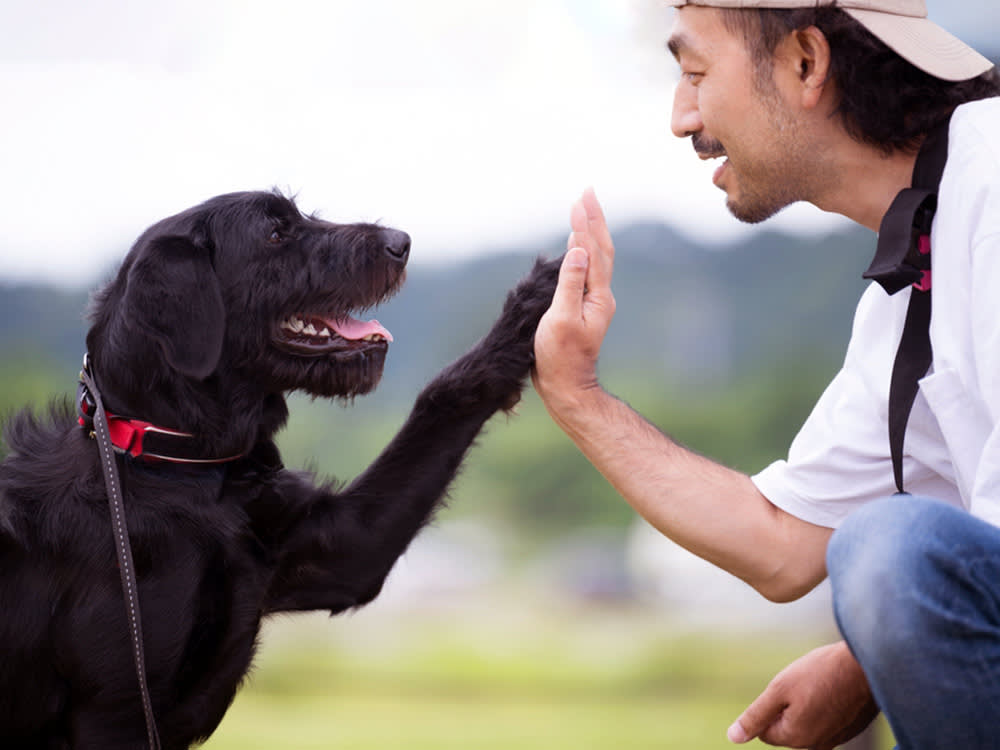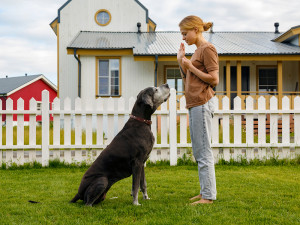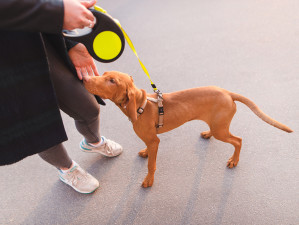Patience Is the Best Thing You Can Give Your Dog During Training
And they’ll thank you for it.
Just as the three most important factors in the value of a house are “location, location, location,” the three most important factors in dog training are “patience, patience, patience.” Teaching dogs to perform certain behaviors (and not to perform certain other behaviors) takes a lot of patience.
Sometimes, the progress is slow, and you will need to wait for it. Nobody said it better than writer Leo Tolstoy, “Patience is waiting. Not passively waiting. That is laziness. But to keep going when the going is hard and slow — that is patience. The two most powerful warriors are patience and time.”
Training is a long-term project.
Training a dog is a lifelong endeavor; there are always new skills to teach them or to fine-tune. It helps them manage their emotions and their environment so they will succeed in training. Plus, this is not fully accomplished in an eight-week-long training class and certainly not in a one-day seminar. A long-term course of study is needed to train any dog — especially those with behavioral challenges, such as reactivity.
Success takes a lot of time and practice. When I talk with clients about working with their dogs to teach them new skills — how to behave appropriately around the house, to help them overcome their fear of strangers, to be able to take a walk without becoming unhinged at the sight of another dog, or to learn to respond to cues in distracting environments — I often say, “Think in terms of weeks and months, not days or hours.” This is to convey the importance of thinking long-term.
How much do you spend on your pet per year?
Setbacks are inevitable.
Although progress may be consistent, it will not likely be steady throughout the process. It’s not easy to be patient, especially when you experience a setback, but that’s just how training is. Sometimes, you are working with a dog who is reactive to other dogs, and an off-leash pup comes out of nowhere.
Or, another scenario: A dog who has a hard time meeting people might be receiving treats from a person with whom they have recently become comfortable. Suddenly, a car alarm goes off, frightening your dog who now fears this person as much as they used to.
Or maybe your dog is not feeling well or is sleepy, causing a decline in their performance that you can’t explain at the moment. It takes your own fortitude to accept that progress will be uneven and that there may be times when the dog regresses, either for obvious reasons or for reasons you don’t understand.
There may be a need to change strategies or try new ways to help the dog.
When working with reactive dogs, some do best by learning to “watch” or do a “u-turn” to keep them from seeing their trigger. Other dogs respond best by learning that the trigger is a cue to run for fun or to play tug, meaning they actually become happy upon seeing what used to upset them. Sometimes, it takes some trial and error to figure out what will be most effective, and that can be exhausting.
Switching up the reinforcement can be a powerful strategy, but some dogs prefer the predictability of the same reinforcement in a tough situation. Not every strategy works or works best for every dog. Flexibility is key, but it will be a challenge to abandon one method and start anew with another, even if it is the right thing to do. It’s analogous to people trying multiple techniques or even multiple therapists to improve their emotional state, behavior, and quality of life.
Patience is a relationship enhancer.
Practicing patience is good for the relationship, preventing frustration and unreasonable expectations. It’s imperative that you work at the speed your dog can go, not the speed you wish your dog could go. Give them the gift of as much patience as they need. Accepting them for who they are includes accepting the pace at which they can go. I used to have a dog who was rarely quick to learn anything new. Bugsy often took weeks to learn what I could teach most dogs in one or two sessions.
It took patience and so much repetition to teach him any new tricks or skills. It was a wonderful lesson in the importance of patiently accepting a dog for who he is because if I had lacked the ability to keep trying, our training journey together would have been pointless. With patience, it was successful, enjoyable, and educational for both of us. I am grateful to him every day, though it’s been years since his passing. Even for dogs who learn at a more typical rate or those who learn especially quickly, repetition is just a part of training.
Many dogs need lots of experiences meeting new people to be able to handle introductions calmly and politely. It’s common for dogs to need to practice skills in new situations and contexts. Just because a dog can come when called at home doesn’t mean they can do it at the park. It takes a lot of patience to practice the same skill in a variety of increasingly difficult contexts until the dog can respond appropriately to a cue in a whole bunch of places and not just in a few.
It takes a long time to change how a dog feels, especially about something scary.
So much of working with dogs with behavioral issues involves addressing how they feel. Many behavioral issues are not training issues, meaning that the dog is not acting the way they are (barking out the window opens in new tab at trucks, lunging at other dogsopens in new tab, growling at strangers, etc.) because they lack training but rather because they are afraid or too highly aroused.
Yes, training will be a part of changing their behavior, but the issue is how they feel, and that’s what any work to change their behavior must focus on. Intuitively, we can understand that changing the way the dog feels is not something that can happen overnight in most cases, and that makes it easier to be patient.
Behavioral change takes time.
Not every session or every day will feel successful, at least not to the degree you might have hoped when you began the day. It’s important to let the satisfaction and pride come from your efforts and the process, even if the results don’t always look as you’d like. The daily work and effort lead to improvements over the long haul.
Better behavior and more success for your dog happen slowly most of the time. Although the occasional big breakthrough should be celebrated, most progress is incremental. It takes patience to wait for it and to be at peace with the fact that behavioral change takes time.
Be patient with yourself.
It’s emotionally exhausting and hard work to change a dog’s behavior and teach them new skills. You may make mistakes and feel regret. Offer yourself the same gift of patience you give your dogs. They deserve your patience, and you deserve it, too.
The importance of patience is a timeless idea. It was long ago in the 13th century that the Persian poet Saadi so simply and beautifully stated, “Have patience. All things are difficult before they are easy.” I wonder, could he also have been a dog trainer?








